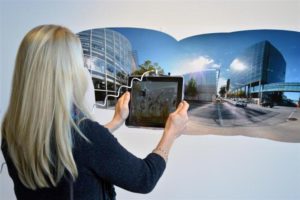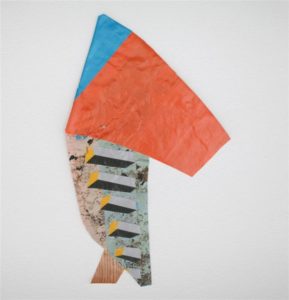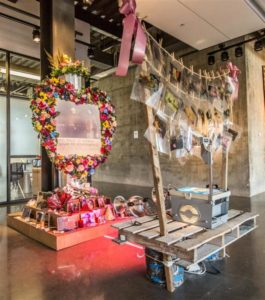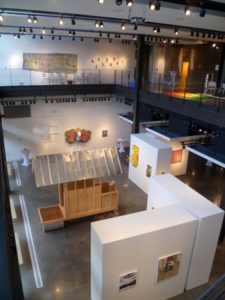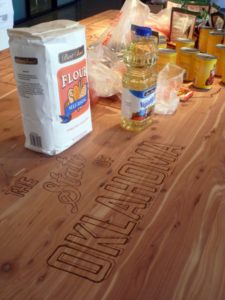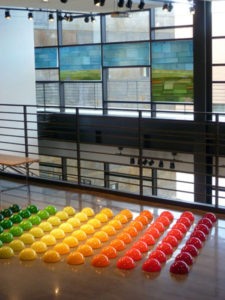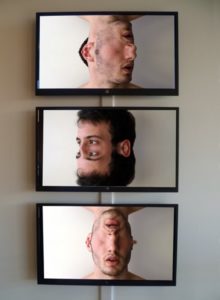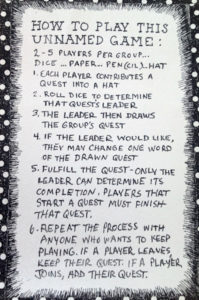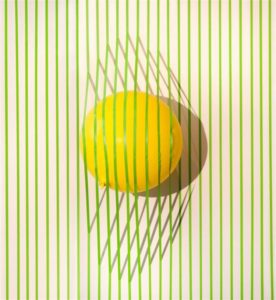December 17 – February 16, 2013
Hardesty Arts Center
101 East Archer Street
Tulsa, OK 74103
Featuring 44 artists selected through a competitive process, the Oklahoma Visual Arts Coalition’s inaugural Concept/OK: Art in Oklahoma exhibition debuts to the public at the newly completed Arts & Humanities Council of Tulsa’s Hardesty Arts Center (AHHA).
The multifaceted Concept/OK exhibition includes works created by three residency artists (organized by Alison Hearst), a survey of OK-based artists’ works on the first floor of AHHA, and FOCUS: OK<–>KC, a smaller, in-depth presentation of works by four Oklahoma artists and five Kansas City, MO artists on the second floor.
FOCUS: OK<–>KC, is a collaborative exchange project between the Oklahoma Visual Arts Coalition (OVAC) and Charlotte Street Foundation (Kansas City, MO) that seeks to connect exceptional artists from the region to new institutions, audiences, curators, and artists’ networks through the experiential processes of exhibition making. Featuring Oklahoma artists Grace Grothaus, Aaron Hauck, Geoffrey Krawczyk, and Romy Owens; and Kansas City artists Jason Carron, Cory Imig, Charlie Mylie, Lindsey Griffith, and Garry Noland; FOCUS: OK<–>KC is on view through February 16 at AHHA, Tulsa, OK, and includes a series of related public programs as well as forthcoming exhibition catalog with contributions by Liza Statton, Alison Hearst, Shannon Stratton, Kirsten Olds, and Theresa Bembnister. A new iteration of the exhibition project, organized by Charlotte Street curator-in-residence Jamilee Polson Lacy, will open at Charlotte Street’s la Esquina venue in March 2013.
FOCUS: OK<–>KC Statement:
The artists selected for FOCUS: OK<–>KC create works that make manifest the complex intersections between individual and collective experience. Each artist employs a variety of materials and forms, ranging from high-tech software to low-tech hardware, as well as the pictorial language of abstract and figurative art, in ways that attempt to describe contemporary human existence in visual terms. Some artists draw from personal events and private observations, creating works that resemble a densely layered map of lived experience. Others create new situations wherein viewers become active participants in the artists’ modes of exploration. Still others create objects that speak to the importance of shared cultural references while living during an era of unprecedented technological change.
Artists evoke notions of change by transforming physical materials in ways that challenge traditional conventions of artistic practice. In his geometry-infused, packing-store tape assemblages, Garry Noland addresses the long history of illusionistic painting that employ the trompe l’oeil techniques of Renaissance and Baroque painters. Grace Grothaus similarly shifts our perceptions of the observed landscape with augmented reality software. Romy Owens photographs fragments of urban decay and then hand stitches these images into visions of distorted beauty.
Cory Imig creates installations that record her habitual moments of being in time. Aaron Hauck’s figurative sculptures infuse the mundane realm of mass consumption with a Pop sensibility that leaves us equally amused and unnerved. Food and conversation become catalysts for confrontation in Geoffrey Krawkcyzk’s performances, which often address disquieting political realities. Jason Carron’s honest videos externalize our internal anxieties, while Charlie Mylie and Lindsey Griffith’s collaborative, durational games reiterate the importance of authentic human interaction in a world increasingly mediated by the screen.
These artists question how we relate to ourselves and to one another. Their works, like this exhibition, realize the ongoing processes of negotiation, compromise, and reflection. The viewer constructs resolution and meaning; the artists continue to invite, engage, and provoke.
Exhibition Catalog:

